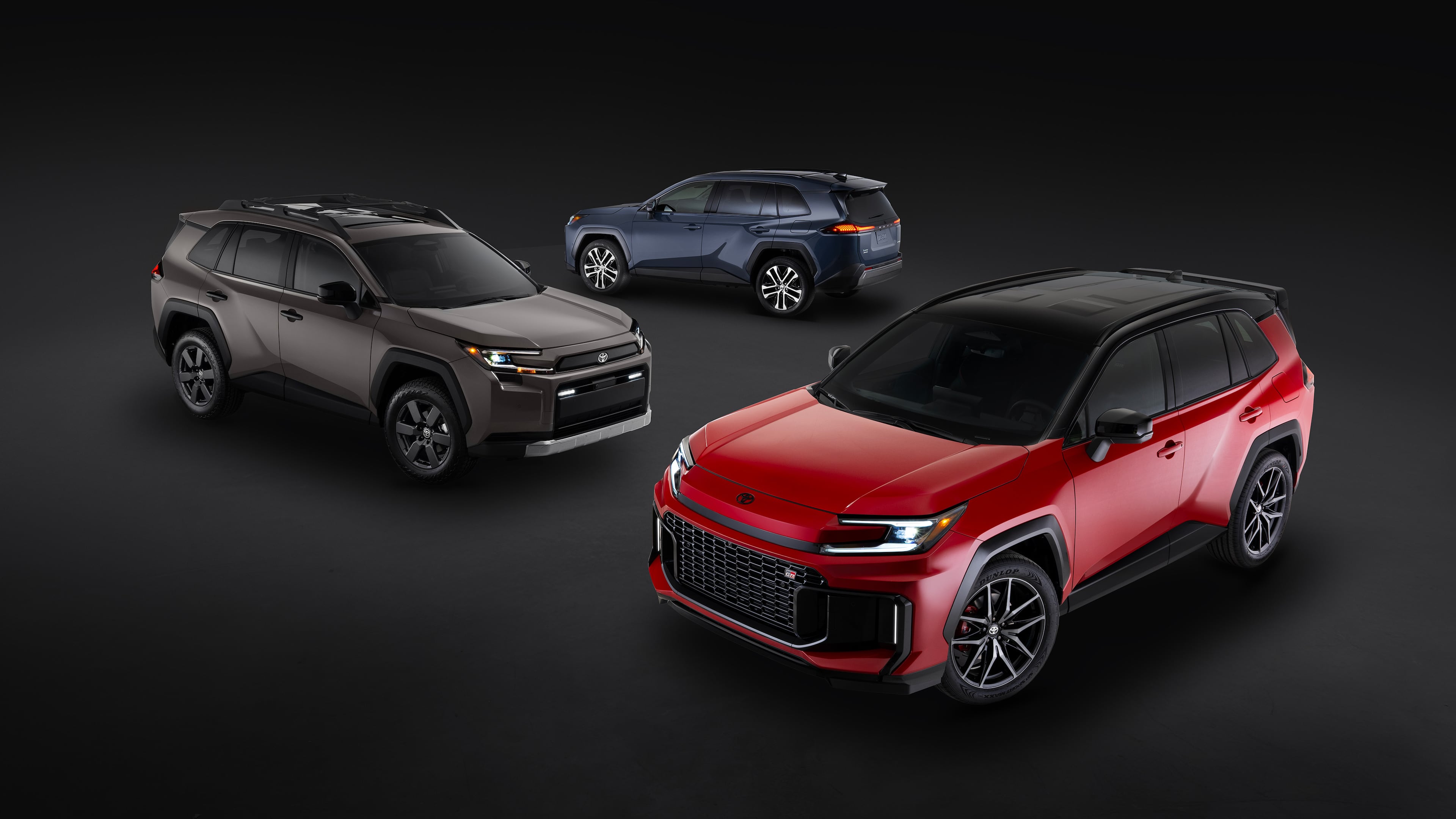Toyota hits gas on going almost all-hybrid by including its bestseller

Toyota revealed a new version of its bestselling vehicle, the RAV4, in late May.
But the biggest news wasn’t what was added to the compact SUV. It’s what Toyota took away.
The 2026 RAV4 has no conventional, gas-powered version.
Toyota will sell you a hybrid or a plug-in hybrid electric vehicle version of the RAV4. It will not sell you a traditional gas-powered version, as it will no longer bother to build one.
PHEVs are hybrids that can be plugged in to recharge and run off another fuel, such as gasoline.
A PHEV can travel miles on electric power alone before using gasoline. You can treat your PHEV like an electric car for short drives but take longer drives on gasoline without relying on the nation’s patchwork charging infrastructure.
The 2026 RAV4 Plug-in Hybrid, Toyota says, has an all-electric range of about 50 miles.
No public announcement, just a quiet change
Automakers around the world have been taking different approaches to reach long-term global climate goals through shifts to electric vehicles.
Toyota has not publicly announced an all-hybrid strategy. Still, the world’s largest automaker has been abandoning traditional gas-powered cars, little by little.
The strategy is working.
When asked when they plan to build their last car without an integrated electric motor, Toyota representatives are often evasive. David Christ, vice president of the Toyota Motor North America Group, told Reuters last year, “Going forward, we plan to evaluate, car line by car line, whether going all-hybrid makes sense.”
The brand currently offers a hybrid version of every car it sells in the U.S., with the exception of its bZ4X electric vehicle (EV), the GR86 and GR Supra sports coupes and the Mirai, which uses a hydrogen fuel cell for power.
Its Lexus luxury marque is almost as heavy on hybrids. Cars without hybrid power trains are steadily disappearing. The brand recently canceled its nonhybrid RC coupe and announced a limited “Ultimate Edition” of its IS sedan, often a signal that a production run is ending.
Toyota’s most important models are going first
It’s hard to overstate the importance of the RAV4 to Toyota. When Kelley Blue Book editors tallied America’s car purchases in 2024, the RAV4 had accomplished a seemingly impossible feat.
The compact crossover was America’s third-best-selling vehicle last year. It knocked a full-size truck off the medal stand for the first time in over a decade.
In a chaotic year for the automotive industry, Toyota didn’t take risks with its sales champion.
The company already had proof that dropping gas-powered models from its lineup doesn’t hurt sales, having done the same with the Camry, America’s bestselling sedan, at that car’s last redesign. The Camry kept its top sales ranking with no pure gas-powered version to offer.
The Sienna minivan, too, is now hybrid-only. It regularly competes with the Honda Odyssey for the minivan sales crown, but going hybrid-only has not hurt the Sienna’s sales.
The move is working
Data from Cox Automotive show that in the last quarter of 2024, 11.5% of all cars Americans bought were hybrids, but 51% of all Toyotas sold in the U.S. were.
The same pattern holds for PHEVs. They comprised 2.1% of all car sales but 12% of Toyota sales.
Another 8.6% of all new cars sold that quarter were EVs. Toyota made up a tiny percentage of those, with just the bZ4X in its lineup. The company is wading into EVs more slowly than most rivals. By the end of 2026, it could have three for sale — an upgraded bZ4X (now called the bZ), a larger bZ Woodland model and a rebirth of its C-HR subcompact SUV as an all-electric crossover.
None of the three EVs is likely to sell in RAV4 or Camry numbers, but Toyota may not want them to. EV sales slipped last month. Congress is debating ending a $7,500 tax rebate that helps many Americans afford electric cars.
EVs get the headlines. Hybrids get the sales.
Efficient use of resources
Toyota argues that hybrids make more efficient use of limited resources.
In a memo to dealers in 2023, Toyota said, “The amount of raw materials in one long-range battery electric vehicle could instead be used to make six plug-in hybrid electric vehicles or 90 hybrid electric vehicles.”
To be fair, that sounds like a company trailing its rivals in the EV transition, but there is solid math behind the statement. If you’re concerned with reducing America’s contribution to the global carbon budget, helping 90 drivers use less gasoline trumps helping six — or one.
Sean Tucker reports for Kelley Blue Book from Washington, D.C., where he has covered the auto and energy industries for a quarter-century.
The Steering Column is a weekly consumer auto column from Cox Automotive. Cox Automotive and The Atlanta Journal-Constitution are owned by parent company, Atlanta-based Cox Enterprises.


